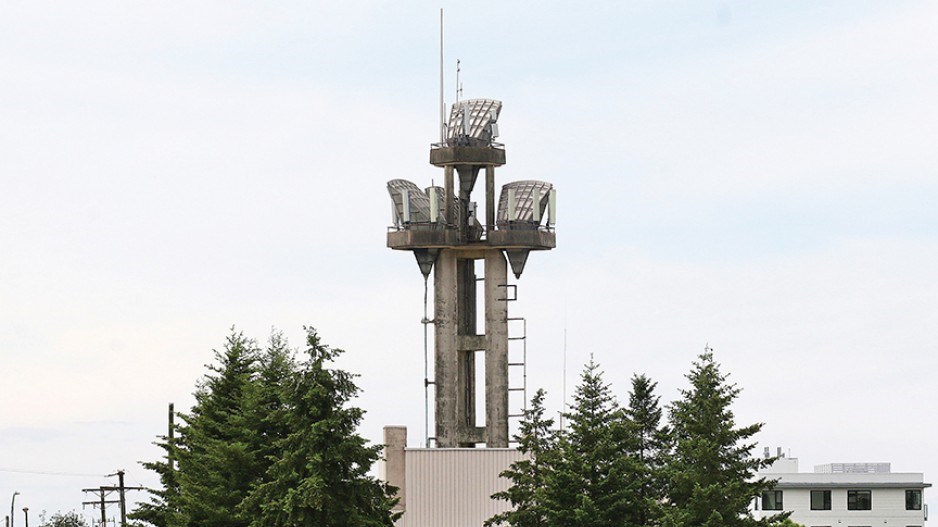Telecom giant Rogers Communications Inc. Sept. 1 announced rollout of 5G technology to 26 B.C. communities by year’s end using Ericsson hardware.
The move means the company will add 5G options to 50 new cities in Canada Sept. 1 and more than 60 markets by Dec. 31.
Rogers began the rollout in downtown Vancouver, Montreal, Ottawa and Toronto in January and is now ramping it extensively.
“5G represents a massive technological transformation that will change the way British Columbians live and work,” said Rogers Communications B.C. region president Rick Sellers.“ Strong digital infrastructure and this next-generation technology are critical to fuel productivity and innovation as we power out of the pandemic and in the future as we reset the competitive landscape in B.C. and for Canada, globally.”
That Shenzhen, China-based Huawei Technologies Co. is not part of the continued rollout comes as no surprise. Rogers vice-chair Philip Lind in May told NN Bloomberg Huawei poses a threat to Canada and should be banned from the national 5G network.
Lind said the company’s relationship with Beijing is too close, and it would have to do the Chinese government’s bidding.
Rogers isn’t the only Canadian telecom company to have chosen a technology supplier other than Huawei.
Vancouver-based Telus Corp. revealed June 18 it was launching its 5G network in Vancouver, Calgary, Edmonton, Montreal and Toronto.
That move came a week after Bell Canada revealed its initial 5G network coverage in the same cities
Telus’ announcement marked a change of plans for that company.
Amid ongoing espionage concerns over Huawei, Telus chief financial officer Doug French told the Financial Post in February his company was still planning to roll out 5G gear from the Chinese tech giant by the end of 2020.
But by June, Telus and Bell left Huawei in the dust by announcing they were tapping European vendors Telefonaktiebolaget LM Ericsson (Nasdaq:ERIC) and Nokia Corp. (HEL:NOKIA) to build out their 5G networks.
Telus also revealed it selected Samsung Electronics Co. Ltd. as a network infrastructure partner to help deploy 5G products.
Shaw Communications Inc. said in January its wireless network contains no Huawei equipment.
Huawei, Finland’s Nokia Corp. and Sweden’s Ericsson and are the top three radio equipment vendors in Canada, with South Korea’s Samsung and China’s ZTE Corp. rounding out the top five internationally.
Uncertainty over 5G’s future in Canada has centred on a precarious political situation in which Ottawa faced pressure from intelligence allies in the so-called Five Eyes alliance (Canada, USA, UK, New Zealand and Australia) to ban Huawei’s 5G equipment due to concerns over vulnerability to spying.
But Canada also faces pressure from Beijing following the arrest of Huawei CFO Meng Wanzhou at Vancouver International Airport in December 2018 in connection with a U.S. extradition request. That case remains ongoing in B.C. Supreme Court.
Soon after Meng’s arrest, two Canadians living in China – Michael Kovrig and Michael Spavor – were detained by Chinese authorities.
China has insisted Meng’s arrest was unlawful, and Beijing has maintained the so-called “Two Michaels” were arrested on legitimate national security charges. However, officials have also suggested the pair could be released if Meng was released.
While the telecommunications companies have moved away from Huawei, Glacier Media investigations have shown Canadian universities getting closer.
Glacier Media discovered Canadian taxpayers have been funding university research with technical reports, samples, models and prototypes created given to Huawei.
Further Glacier Media research showed Huawei has a foot in the door of Canadian scientific research as well as international nuclear physics research.
A Rogers news release said 5G is expected to be the most transformative technology since wireless services were introduced in 1985, making real-time connectivity a reality.
Higher connectivity speed will mean “the lag between sending a request and the network responding will theoretically drop to one millisecond, 400 times faster than the blink of an eye,” the company said.
@jhainswo



